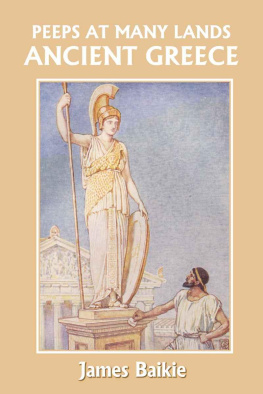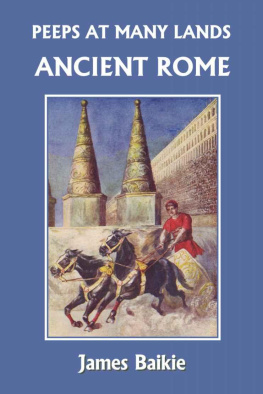[image]
A TAILOR AT WORK. Page 1.
PEEPS AT MANY LANDS
INDIA
BY
JOHN FINNEMORE
WITH TWELVE FULL-PAGE ILLUSTRATIONS
IN COLOUR
BY
MORTIMER MENPES
LONDON
ADAM AND CHARLES BLACK
1907
Published September 17, 1907.
Reprinted November , 1907.
CONTENTS
CHAPTER
LIST OF ILLUSTRATIONS
BY MORTIMER MENPES
.............. frontispiece
on page viii
[image]
SKETCH-MAP OF INDIA.
INDIA
CHAPTER I
THE GATEWAY OF INDIA
To the vast majority of European travellers Bombay is the gateway of India. It is here they get their first glimpse of the bewildering variety of races, of colours, of types, of customs, which make up India. After the journey through the Suez Canal, and the long run across the Arabian Sea, the traveller is very glad to spend a day or two at Bombay, gaining first impressions of this new, strange country. He may be interested in the fine new buildings of the modern town, or he may not; he is certain to be interested in the native quarter.
Here he gets his first glimpse of that great feature of Indian life, the bazaarrows and rows of narrow streets filled with shops and crowds. The shops are small booths, often built of mud, or archways, or, again, are mere holes in a wall. Everything is open to full view; there are neither windows nor doors. The merchant or shopkeeper squats beside his goods; the artisan does his work in sight of the passers-by. The crowds are stranger than the shops. Here you may see Hindoos, Parsees, Burmese, Singhalese, Lascars, Moslems, Arabs, Somalis, Jews of many countries, Turks, Chinese, Japanese, and a score of other nations. Amid the throng of many colours move white people from every land of Europe, and the babel of tongues is as astonishing as the mingling of costumes.
Here is struck at once the note of colour which enlivens every street scene in India. The people wear robes of every shade, and turbans or caps of every hueblack, white, red, green, yellow, purple, pink, every colour of the rainbowand a hundred shades of every colour meet and mingle as the crowds flow to and fro.
Where there is an open space the snake-charmer squats beside his cobras, playing on his strange pipe, and putting his venomous pets through their tricks; or a conjurer is causing a mango-plant to spring up and put forth fruit from apparently a little barren heap of earth. Busy Indian coolies, naked save for a dirty turban and a wisp of cotton cloth round the loins, hurry along with water-skins, and the skins, filled with water, take roughly the shape of the sheep or goat which had once filled them with flesh and bones. Other coolies are driving queer little carts drawn by a pair of tiny, mild-eyed, hump-backed oxen; and others, again, squat beside the way with their chins on their knees, waiting to be hired.
[image]
A BUSY BAZAAR. Chapter XVI .
When it comes to sight-seeing proper, the traveller will visit the island of Elephanta, six miles from the city. Here stands a great temple cut in the solid rock, its roof supported by huge pillars left standing when the chamber was hollowed out. The temple is adorned with colossal figures and carvings of Hindoo gods and of animals. Its excavation must have been a tremendous piece of work, and it is considered that it was carried out some eleven hundred years ago.
Among the crowds of Bombay no people are more distinctive than the Parsees. The Parsees may always be known by the strange head-gear and long coats of the men and by the splendid dresses of the women, who move about as freely as European women, and are not shut up like Hindoo women of the richer classes.
The Parsee man wears on his head a long, high, shiny hat in the form of a cylinder; it has no brim, and is one of the oddest head-coverings that may be seen. In origin he is a Persian, for the Parsees are descended from a race that fled into India from Persia when that land was attacked by the Arabs twelve centuries ago. The Parsee women are dressed very splendidly, because their race is very rich. The Parsee is the banker and money-lender of India. No other native is so clever in trade or amasses wealth so swiftly as a Parsee.
In his religion the most sacred thing is fire, and to him the sun, as the emblem of fire, is the greatest religious symbol. Upon the shore of the bay many Parsees may be seen at evening at their devotions before the setting sun. Each seats himself upon the sand, bows to the sun, taking off his hat and replacing it, and then, with a small brass jar at his side, begins to read prayers from a sacred book, chanting them aloud.
The Parsee reverence for fire is seen in the treatment of his dead. The Hindoo makes a funeral pyre and burns his dead. Not so the Parsee. He considers that fire is too sacred to use for such a purpose; nor, on the other hand, is he willing to defile the earth by digging a grave. So the Parsee dead are exposed to be torn to pieces and devoured by vultures. Beside the sea there stand five broad low towers, the famous Towers of Silence. In these the bodies of the dead are exposed. One of these is reserved for the use of a wealthy family, one for suicides and those who die by accidental deaths, and three for general use. The towers and the trees around are loaded with huge vultures, which, in a couple of hours, reduce a body to a heap of bones.
CHAPTER II
IN THE LAND OF THE RAJPUTS
Rajputana is the land of the Rajputs, a splendid warrior race of Northern India. In times long gone by the Rajputs held power over the wide plain watered by the Upper Ganges, but seven hundred years ago their Moslem foes drove them westwards into the land still called Rajputana.
The history of the Rajputs is one of battle. They are born fighters. They have taken a share in all the wars which have torn India through all the centuries. They struggled hard against the British power, but now they are good friends of ours, and their Princes rule under British protection.
The history of this fine race is full of stories of romance and chivalry. Nor is the Rajput of to-day inferior to his brave and haughty fathers: "The poorest Rajput retains all his pride of ancestry, often his sole inheritance; he scorns to hold the plough, or use his lance but on horseback." Of all the brave old stories of Rajput valour and constancy none are more beloved than the tales which hang around the three sacks of Chitore. Thrice was that ancient city seized and plundered by Moslem foes, and never have those terrible days been forgotten. To this day the most binding oath on Rajput lips is when he swears, "By the sin of the sack of Chitore."
Long ago there was a Prince of Chitore named Bhimsi, whose wife, Princess Padmani, was famed far and wide as the most beautiful woman in the world, and as good as she was beautiful. The report of her beauty drew Allah-u-din, a great Moslem warrior, to the walls of Chitore at the head of a powerful army. He demanded to see the face of Padmani, were it only a reflection of her face in a mirror. Prince Bhimsi invited him to a feast, and he saw Padmani. When the feast was over, the Prince escorted Allah-u-din back to his camp. Then the wily Moslem seized the Prince, and sent word to the chiefs of Chitore that, if they wished to see their King again, they must send Padmani to become the wife of Allah-u-din.







